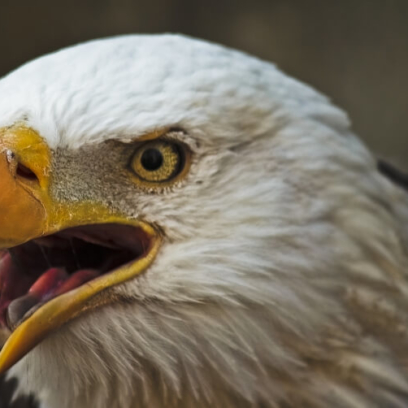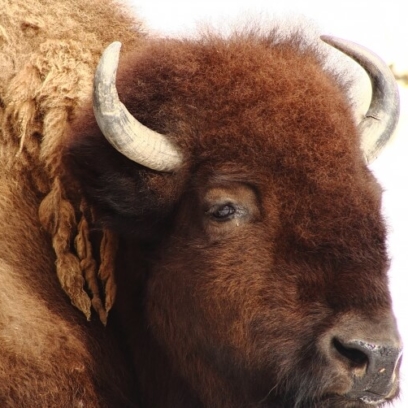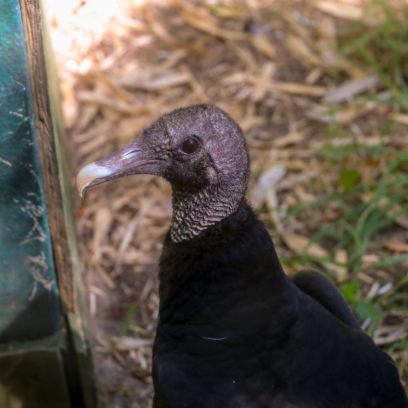Wild Turkey
Meleagris gallopavoIsn’t it Wild? Wild turkeys can sprint as fast as a horse and fly even faster, topping speeds of up to 55 miles per hour. They also have excellent vision and can see three times better than a human can. The arrangement of their eyes on the sides of their head allows a 360-degree field of vision with only slight head movements.
There’s More to the Story The wild turkey is a recognizable bird seen roaming through backyards and on the sides of roads, and a close relative to the bird that has become a symbol of Thanksgiving. Currently it’s estimated that more than six million wild turkeys in the United States inhabit close to 715 million acres. Yet, this same species was once almost extinct.

In the early 1900s, wild turkeys were nearly wiped out due to hunting, habitat destruction, and widespread logging. By the early 1930s, the bird hit its lowest recorded number nationwide with only about 30,000 left in the wild. At that time, no game laws existed to prevent overhunting; meanwhile hundreds of acres of forests were cleared to make way for logging and agriculture. As the turkey population continued to plummet, the bird actually vanished entirely in many states.
Luckily, thanks to efforts of conservationists and groups like the National Wild Turkey Federation (NWTF), turkeys were able to make a rebound. Working closely with state and federal agencies, conservation initiatives were put in place to ensure a full restoration of the bird species. Implementation of hunting seasons and species-specific protocols began protecting the birds from unregulated hunting. Forests that had been destroyed began to grow back, creating habitats for turkeys and other wildlife to flourish. And with the help of NWTF, a wild turkey reintroduction effort was established. By trapping and transferring turkeys throughout its native range, new flocks began to thrive in areas that had once seen significant declines. The restoration of the wild turkey is a great success of wildlife management in America. Today and throughout history, conservationists play a vital role in the recovery of species across the country. At a time when rampant hunting and deforestation offered little hope for the turkey’s future, conservation and preservation brought the species back from the brink of extinction.
This success story proves what kind of positive impact people can have on the environment, wildlife, and each other. The return of the wild turkey is a guide in restoring other wildlife. Human beings depend on nature – and by contributing to the conservation of earth’s animals, plants, and other natural resources – people are not just saving their home, but each other.
Details
Height: Male: 40 in; Female: 30 in.
Weight: Male: 18 – 30 lbs; Female: 8 -12 lbs.
mostly plant material including leaves, seeds, grains, berries, and bulbs
open woodland across the United States, parts of Mexico and southern Canada
Least Concern
Wild Woodlands
Exhibit information
Discover the amazing creatures that call North America home! Watch the bison graze, the pronghorn demonstrate their speed, and the wild turkey show off his courtship displays! You can even spy the only two venomous snakes in New England–the northern copperhead and timber rattlesnake, and learn about their crucial role in the ecosystem. Most of the species within the North American section are great conservation success stories, including the shy red wolf.
Red wolves were listed as Extinct in the Wild by 1980. Through the collaboration of the US Fish & Wildlife Service and the Associations of Zoos and Aquariums’ (AZA) Red Wolf Species Survival Plan (SSP), the last 14 remaining wild red wolves were brought into zoos to establish a captive breeding program with the primary objective of forming the foundation of a wild population through reintroduction back to the wild. Even though breeding is a main component, our red wolves also help educate the public on the plight of their wild counterparts.
Thanks to the collaborative efforts of these partner facilities across the United States, the captive red wolf population has once again risen steadily to nearly 250 wolves! Learn all about how these animals have been saved from extinction.




